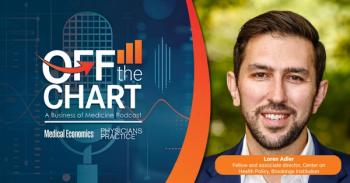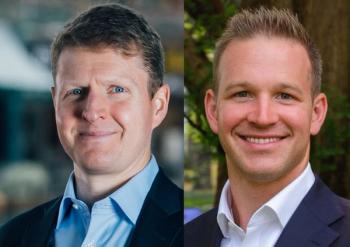
The ripple effect: How the One Big Beautiful Bill Act threatens the future of health care
Why federal student loan changes could push future doctors away from primary care and leave millions without access to care.
When most people think about how federal budgets affect health care, they think about hospital funding, Medicaid or insurance coverage. But some of the most damaging effects happen further upstream, before a patient ever walks through a clinic door. They begin in medical school classrooms, student loan offices and young physicians’ minds as they decide where and how they’ll practice medicine.
The 2025 federal budget introduces sweeping changes to the student loan landscape, particularly for future physicians. Adjustments to the student loan repayments and caps on federal borrowing will
As both a practicing physician and a co-founder of a bank working directly with doctors across the country, I see how debt drives decision-making every day. And the trajectory we’re on is alarming.
The disappearing path to primary care and rural practice
It’s no secret that medical school is an expensive journey. According to the
These changes hit aspiring primary care physicians and rural doctors extremely hard. These fields, while essential, often offer significantly lower salaries than subspecialties or urban practice. Historically, programs like PSLF made these paths financially viable. Because future doctors will now have to use private loans without the benefits of PSLF, we’re asking them to work in lower-paying roles while carrying even more expensive and less flexible debt.
When a new physician is staring down a mountain of loans, the most rational — and increasingly common — question can become: Where can I make the highest salary to pay student loans off as quickly as possible? That question rarely leads them to community clinics or rural hospitals. It leads to affluent suburbs, surgical specialties and high-income private practice. The result? A growing maldistribution of care.
Even when doctors do choose to enter primary care or rural practice despite these financial challenges, they’re more likely to carry greater financial stress throughout their careers. As a primary care doctor myself, I have sat with patients who are also doctors saddled with massive debt burdens. That stress can translate into burnout, lower job satisfaction and higher turnover, especially in already resource-strained environments. When we put doctors in a position where they feel they must sacrifice financial security to serve where they’re needed most, we set the stage for long-term consequences — not just for those physicians, but for the patients and communities who rely on them.
A dangerous cycle: Fewer doctors, fewer hospitals, less access
Access to care in rural communities continues to decline, and the causes are complex. Medicaid reimbursement cuts, hospital closures, provider shortages and financial disincentives all play a role. As a result, more patients in rural areas go without regular checkups, chronic conditions go unmanaged, and some emergency rooms close entirely due to inadequate staffing or funding.
Fewer providers and hospitals mean longer wait times, lower quality of care and worse outcomes. It can become exponentially harder to attract new providers. It’s a cycle of declining access that’s incredibly difficult to reverse.
Medical students shoulder the financial burden
With federal loan caps in place, the march of continued inflation and private borrowing on the rise, it’s increasingly difficult for schools to keep cost of attendance in check without broader structural support. As a result, medical students absorb much of the financial strain, often shaping their career paths around repaying their student debt.
This rising cost structure makes medical education less accessible, particularly for students from lower-income backgrounds. As cost of attendance increases and support structures lag behind, future physicians are left to navigate growing financial pressures largely on their own.
The current budget approach doesn’t do much to promote more affordable or transparent medical education. It places additional financial strain on students without offering meaningful support for institutional change. While medical schools are exploring ways to reduce costs and expand access, broader policy changes are needed to make those efforts more sustainable.
The hidden cost of budget cuts
On paper, these student loan changes might look like smart fiscal policy. But the downstream cost — to our health care workforce, our rural hospitals and the millions of patients who depend on them — will be staggering.
We need policies that invest in the future of medicine. That means restoring meaningful forgiveness pathways. It means maintaining, not capping, federal loan availability with IDR and PSLF benefits. And it means recognizing that every barrier we place on future doctors doesn’t just hurt them; it hurts the patients they’ll never get to serve.
Michael Jerkins, MD, MEd, is the president and co-founder of Panacea Financial and is also a practicing physician in Little Rock, Arkansas. With a faculty position and board certifications in both internal medicine and pediatrics, Michael is able to treat patients of all ages and teach medical trainees in both inpatient and outpatient settings.
Newsletter
Stay informed and empowered with Medical Economics enewsletter, delivering expert insights, financial strategies, practice management tips and technology trends — tailored for today’s physicians.

















